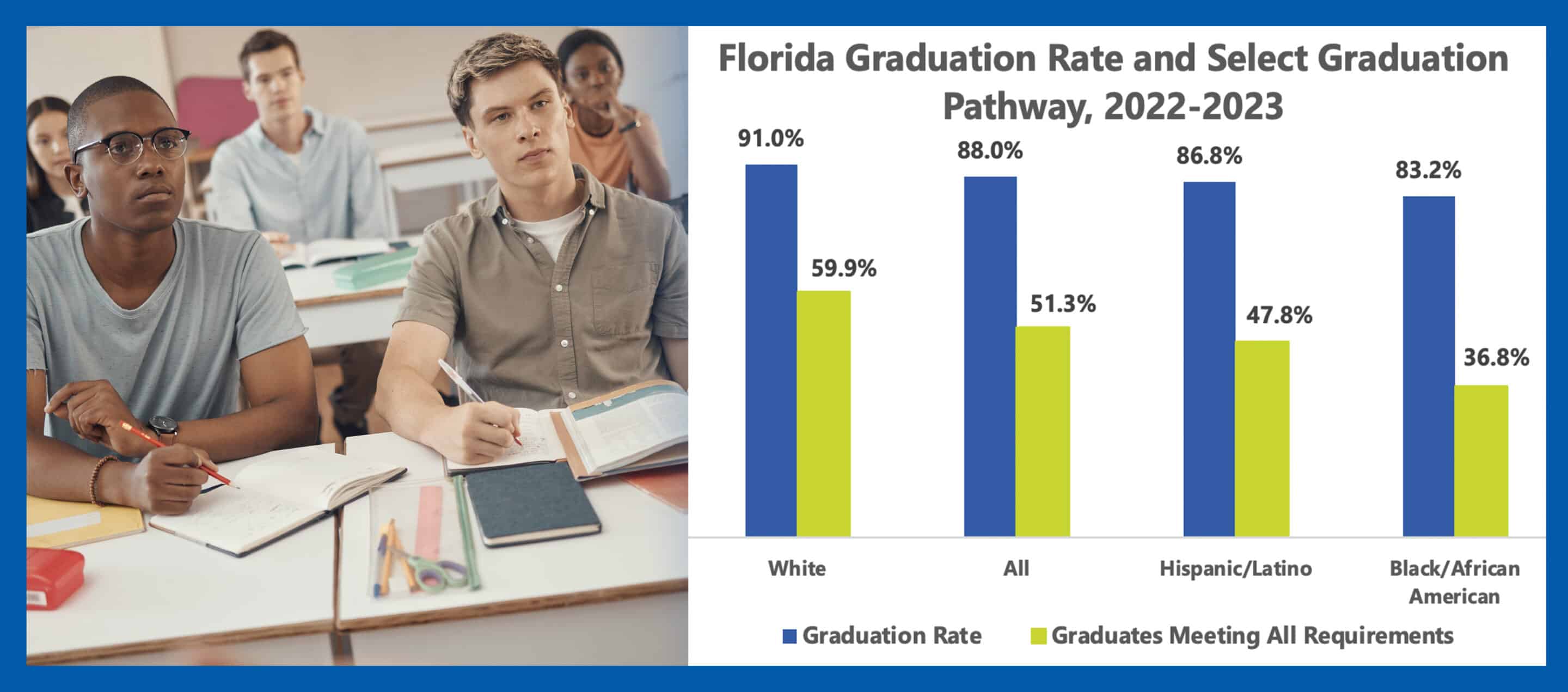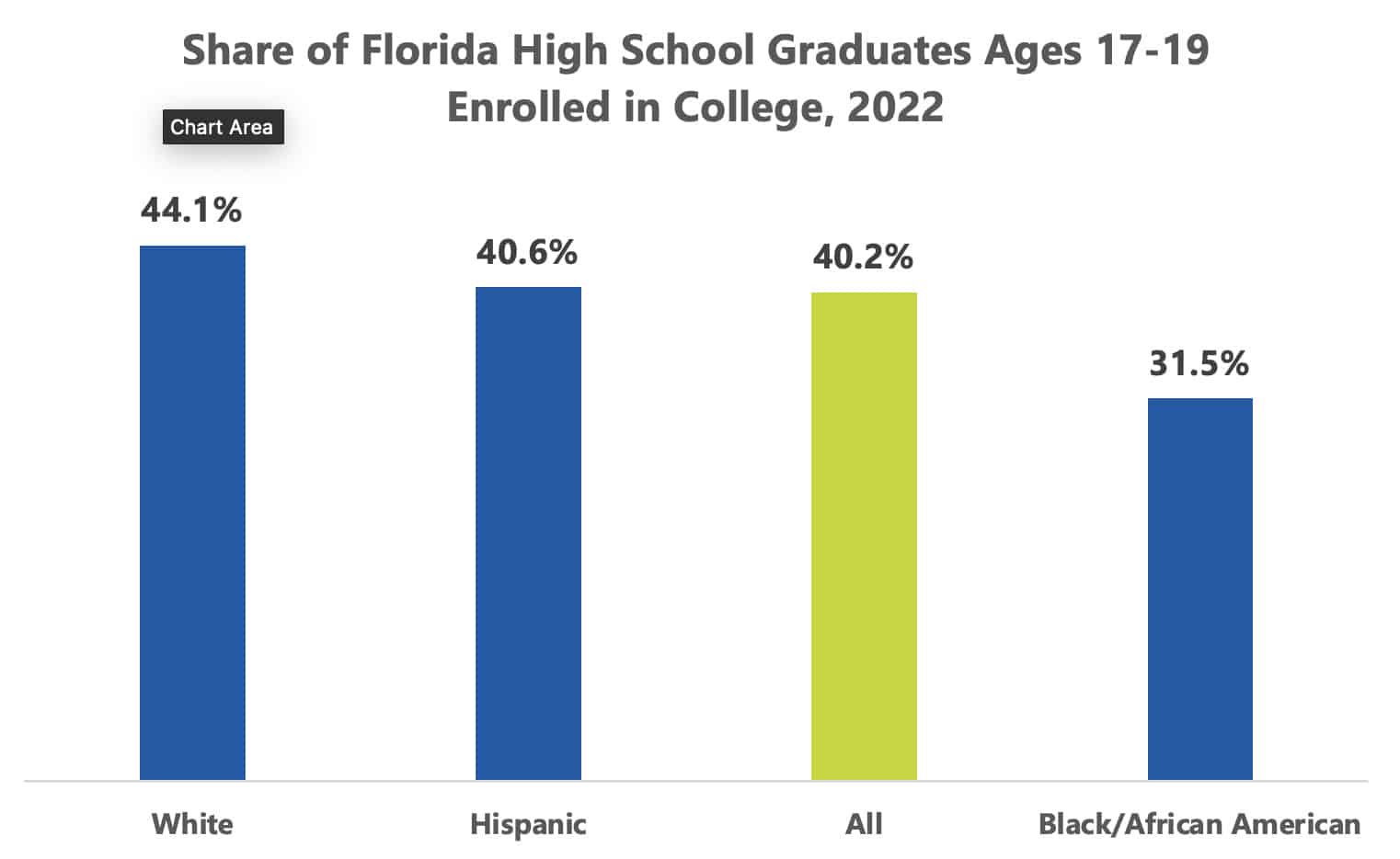
Recently published thought leadership from the Helios Education Foundation/University of Florida Institute of Higher Education, Georgetown University Center on Education and the Workforce, and the Lumina Foundation have elevated discourse around the racial and ethnic gaps in American bachelor’s degree attainment and earnings.
Public and private leaders across Florida have set out bold but achievable goals for educational attainment and our economy as a whole, and in pursuit of those goals the Florida College Access Network (FCAN) is steadfast in its commitment to lead the collaborative movement to ensure every Floridian achieves an education beyond high school and a rewarding career. FCAN believes reduction and elimination of these gaps identified in research is critical and imperative if Florida is to meet those goals.
FCAN encourages parties interested in access for all – access to education and the downstream personal and economic prosperity it enables – to review these works and formulate their own takeaways. However, we present key points from each highlighting the opportunities and benefits for Floridians and the state writ large in solving for these gaps:
- Helios and University of Florida researchers found, in College is a Net Positive for Black Students in Florida, that “investments to increase college attendance—especially in-state college attendance—among Black high school students should be an economic priority for Florida.” Their analysis found that Black students in Florida initially enrolling in a 4-year university see a benefit of $130,000 on a net present value basis – accounting for increased lifetime earnings less forgone income and typical student loan payments post-graduation – versus their contemporaries who did not enroll in college. Furthermore, enrollment in a Florida-based institution yields a higher probability that the state would retain that student – and concomitant fiscal returns from property and sales taxes – after graduation.
- The report, Learning and Earning by Degrees, and associated state data profiles produced by the Georgetown research team took individual benefits of a bachelor’s degree a step further, and calculated aggregate lifetime earning gaps between Florida’s Hispanic/Latino and white adults of $206-billion, and earning gaps between Florida’s Black/African American and white adults of $254-billion.
- Finally, in an Op-Ed by Lumina Foundation president and CEO Jamie Merisotis issued a clarion call describing the lingering racial gaps in our educational outcomes as the most significant part of the “unfinished business of the college attainment movement.
“With the economic benefit to individuals, their families, and society made rather clear with attainment parity, we must assess the pipeline that prepares Florida residents for post-secondary success with the same perspective. What are Florida’s gaps on the path to a 4-year degree? What does the future hold? While many factors contribute, assessing the journey to bachelor’s degree attainment at two junctures – high school graduation and enrollment in college following graduation – provides some insight.
High School Graduation Rates and Pathways
Florida students of all races and ethnicities have made significant gains in recent years, relative to pre-COVID standards, for graduation rates. Yet, gaps persist in on-time graduation across lines of race and ethnicity. In comparison to the 88.0% graduation rate of the overall 2022-2023 cohort, Black/African American (83.2%) and Hispanic (86.8%) students were less likely to graduate on time.
Even more distinct gaps are observable with the share of graduates who meet all requirements for a standard diploma versus those graduates who earn a standard diploma through alternate means. Currently in state law, in order to meet all requirements students must demonstrate proficiency on the 10th-grade English Language Arts (ELA) assessment and Algebra I End of Course (EOC) exam while those who graduate through alternate means do so through a waiver of requirements or documentation of a comparative or concordant score on a national assessment. In comparison to the overall share of 2022-23 graduates who at 51.3% “met all requirements,” Black/African American (36.8%) and Hispanic (47.8%) graduates were less likely to meet all requirements for the standard diploma.
College Enrollment In Later Teens By Race and Ethnicity
In 2022, 40.2% of the 176,655 Floridians aged 17, 18, or 19 with a high school diploma were enrolled in college. Among select races and ethnicities, both White and Hispanic members of the cohort were enrolled in college at rates greater than the aggregate, at 44.1% and 40.6%, respectively. Black/African American members of the cohort were enrolled in college at a significantly lesser rate of 31.5%.

While work remains to be done, FCAN is energized and galvanized with its partners in a commitment to collaboration, and resolute in its belief that a state that promotes college readiness, access, and success for all is a Florida that meets or exceeds its appropriately audacious goals. Together, with targeted investments and the right policy environment, we can improve outcomes for all students at every key checkpoint in their educational journey to and through post-secondary education. Florida’s overall economic prosperity and the well-being of its residents are at stake.
